Other
- Fishpond, code name for a development of Fishpond, a World War II British radar system
- Fishpond.co.nz, a New Zealand e-commerce company
- "The Fishing Pond", an episode of the 2019 Indian animated series Chacha Chaudhary
A Fish pond or fishpond is a pond, artificial lake, or reservoir that is stocked with fish.
Fish pond, Fishpond and Fishponds may also refer to:

Before contact with Europeans, the Hawaiian people practiced aquaculture through development of fish ponds, the most advanced fish-husbandry among the original peoples of the Pacific. While other cultures in places like Egypt and China also used the practice, Hawaii's aquaculture was very advanced considering the much smaller size of the area of Hawaii compared to other aquacultural societies. Hawaiian fishponds were typically shallow areas of a reef flat surrounded by a low lava rock wall built out from the shore. Several species of edible fish thrive in such ponds, and Hawaiians developed methods to make them easy to catch.

Kawainui Marsh or Kawainui Fishpond is a wetland and former fishpond in Kailua, Hawaiʻi. It is the largest remaining wetland and the largest ancient freshwater fishpond in Hawaiʻi, and a designated Ramsar Convention wetland.

A fish pond or fishpond is a controlled pond, small artificial lake or retention basin that is stocked with fish and is used in aquaculture for fish farming, for recreational fishing, or for ornamental purposes.
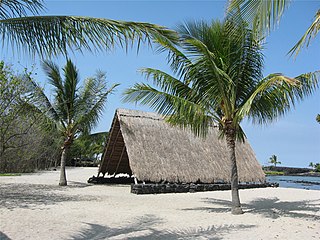
Kaloko-Honokōhau National Historical Park is a United States National Historical Park located in the Kona District on the Big island of Hawaiʻi in the U.S. state of Hawaiʻi. It includes the National Historic Landmarked archaeological site known as the Honokōhau Settlement. The park was established on November 10, 1978, for the preservation, protection and interpretation of traditional native Hawaiian activities and culture.

Go, Diego, Go! is an American children's animated television series that premiered on Nickelodeon on September 6, 2005, and ended on September 16, 2011 in the United States. Created and executive produced by Chris Gifford and Valerie Walsh Valdes, the series is a spin-off of the animated television series Dora the Explorer and follows Dora's cousin Diego, an 8-year-old boy whose adventures frequently involve rescuing animals and protecting their environment.

Rožmberk is a fish pond in the South Bohemian Region of the Czech Republic. It was founded at the end of the 16th century and is part of the Třeboň fishpond system. With an area of 4.89 km2 (1.89 sq mi), it is the largest fish pond in the world.

Jakub Krčín was a Czech architect and engineer. He is best known for being the founder of many fish ponds in Bohemia.
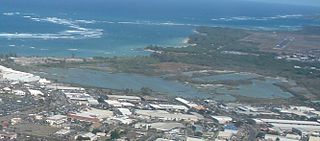
Kanahā Pond State Wildlife Sanctuary (KPSWS) is a 208-acre wetland in Kahului on the island of Maui, Hawaiʻi. The brackish-water sanctuary, situated between the ocean, an urban and commercial area, and Kahului International Airport, is home to many native plant and animal species, including over 100 native plants and invertebrate species, and 86 bird species. These bird species include several state and federally endangered water birds. The origins of the KPSWS can be traced back to the 1700s, when it was once the site of royal fishponds. Today, KPSWS is the focus of conservation efforts.
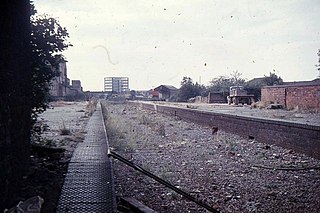
Fishponds railway station was a station in Fishponds, Bristol, England, which was closed by Dr Beeching's cuts in the 1960s.
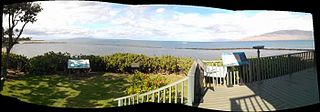
Kalepolepo Fishpond, known by its older name Koʻieʻi.e. Loko Iʻa, is an ancient Hawaiian fishpond estimated to have been built between 1400 and 1500 AD.

Carska Bara is the largest individual bog in Serbia, in the municipality of Zrenjanin. Along with the neighboring pond of Stari Begej it forms the Special nature reserve "Carska Bara".

Huilua Fishpond, in Ahupuaʻa O Kahana State Park on windward Oʻahu, is one of the few surviving ancient Hawaiian fishponds that were still operational well into the 20th century. It was declared a U.S. National Historic Landmark in 1962, shortly after it had been severely damaged by the 1960 tsunami. It was added to the National Register of Historic Places on December 29, 1962.

The Abbot's Fish House in Meare, Somerset, England, was built in the 14th century and has been designated as a Grade I listed building and Scheduled Ancient Monument. It is the only surviving monastic fishery building in England.

Waikoloa Beach is an area located on the South Kohala coast on the island of Hawaii and is located in the census-designated place of Puako. It can be confused for Waikoloa Village, a CDP in the same "ahupuaʻa" and is also known as "Waikoloa".

Kahaluʻu Fishpond, historically known as Kahouna Fishpond, on Kāneʻohe Bay in windward Oʻahu, is one of only four surviving ancient Hawaiian fishponds on Oʻahu that were still in use well into the 20th century. In the previous century there were at least 100 such fishponds around the island. Kahouna was in use until about 1960 and was added to the National Register of Historic Places in 1973, after members of the surrounding community raised concerns that it would be destroyed by development. The Kahaluu Taro Lo'i Historic District was also added to the National Register at that time.

Moliʻi Fishpond is located southeast of Kamehameha Highway between Kualoa and Johnson Roads, near Kaneohe, on the island of Oahu, in the U.S. state of Hawaii. The pond encompasses 125 acres The locale is part of the ahupuaa of Hakipuu. The Molii pond is part of Kualoa Ranch. Tilapia, mullet and moi are found within the pond. Commercial fishing operations are contracted out.

The ʻAlekoko Fishpond, known locally as the Menehune Fishpond, near Līhuʻe, Hawaiʻi, on the island of Kauaʻi, is a historic Hawaiian fishpond. Also known as Alakoko Fishpond, it has been listed on the U.S. National Register of Historic Places since 1973.
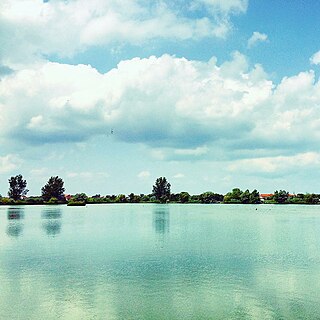
Veliko Blato is a lake in Krnjača, an urban neighborhood of Belgrade, Serbia. It is located in the municipality of Palilula.

The fishponds of the Třeboň Basin or Třeboň fishpond system are a collection of over five hundred fish ponds. They were constructed from the 13th century onwards in the Třeboň Basin area of Bohemia, now the South Bohemian Region of the Czech Republic, with most work occurring between the 15th and 16th centuries, and collectively cover approximately 6,370 hectares. The individual ponds vary significantly in size, and are connected by a labyrinth of canals, ditches, and streams.

Heʻeia Fishpond is an ancient Hawaiian fishpond located at Heʻeia on the island of Oahu in Hawaii. A walled coastal pond, it is the only Hawaiian fishpond fully encircled by a wall. Constructed sometime between the early 1200s and early 1400s, it was badly damaged by a 1965 flood and fell into disrepair. A protected area, it was added to the U.S. National Register of Historic Places in 1973. An effort begun in 1988 is underway to restore the fishpond as a fishery, cultural, scientific, and educational resource.